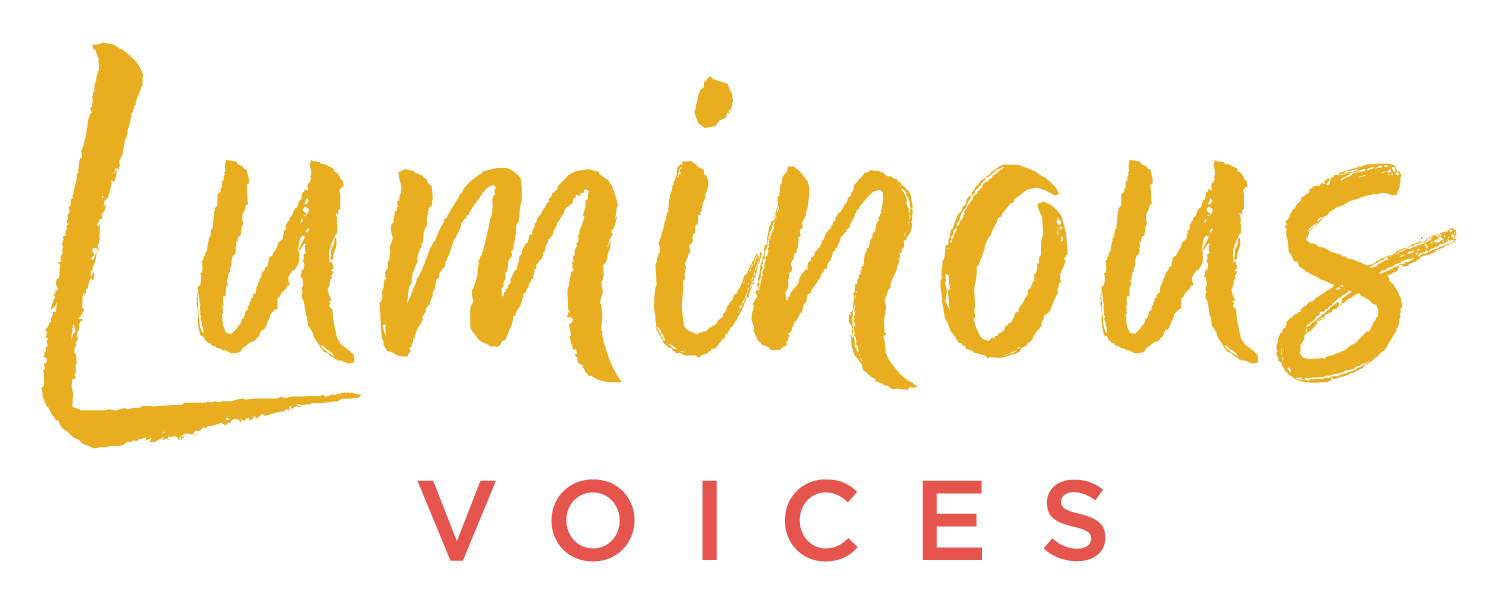Canadian composers lift up Luminous Voices
BY KENNETH DELONG, CALGARY HERALD
Published on October 17, 2018
https://calgaryherald.com/entertainment/music/delong-canadian-composers-lift-up-luminous-voices
At the conclusion of last Sunday’s Luminous Voices concert I saw something I have never seen before: six Canadian composers simultaneously taking a bow at the end of a concert. The significance of the moment was quickly recognized by the audience, which rose as one to acknowledge not just the excellence of the performance, but, even more, to celebrate the composers whose music engaged, challenged, and, ultimately, thrilled those who experienced it.
The program opened in a ceremonial manner with Ambe, set to an Ojibway text in such a way as to project a steady male drone bass with musically attractive figures above it to express the positive spirit of the text. An affective concert opener, it set up a first half of shorter pieces alternately more or less experimental in style.
Compared to some of his other pieces heard in Calgary, Zachery Wadsworth’s To the Roaring Wind is filled with verbal sound effects, mostly representing the wind. Based in these effects, the piece was essentially an “idea” piece and rather different from Wadsworth’s other, more English-inflected works. Not my favourite work on the program, perhaps, but it was still worthy to hear, and included some very fine, expressive writing in its final pages.
Calgary composer Garrett Krause’s The Maple evoked a pan-Canadian sensibility, the text by Charles G.D. Roberts focussing upon a quintessential Canadian image. Gentle, and with a strongly affecting melodic element, the is a prize-winning composition and one that showed a substantial accomplishment in a still relatively young composer. The flow of the lines and the harmonic colouring effectively suggested the generating images of the text, with accomplished part-writing for the voices.
Montreal composer Robert’s Ingari’s prize-winning Vient le jour followed. Based upon a central falling figure in the voices and also the accompanying cello, the music was exceptionally well crafted to display a remarkable variety of expressive nuances, the cello part weaving delicately throughout the vocal parts. It was not hard to hear why the work won a prize in Quebec, the quality of the musical ideas and their distribution throughout the choral forces expert in every way.
Carmen Braden’s Lake Skin followed, like Wadsworth’s piece substantially deriving its impetus and meaning from northern images and atmosphere; it also included some rapt singing by Julie Crouch in the high-lying soprano part. Still a growing composer, this particular piece showed a considerable development in sophistication and refinement on the part of the composer, who continues to be very active.
Jeffrey Ryan’s Angeline on Ossabaw, on a text by Carol Burdick and with impish figures from Beth Sandvoss’s cello part, made a welcome contribution to the program, very evidently the work of an experienced choral composer who knows how to achieve beautiful vocal sounds from a choral group. Playful, yet hauntingly filled with sentiment, this was a much-enjoyed work in the program.
It was charming to hear James Rolfe introduce his Three Songs from poems by E. Pauline Johnson in his tractor-bass voice, and then to hear beautifully seraphic sounds from the female section of the Luminous Voices, filled with sweetness and charm. As with the preceding work, the command of compositional craft could be felt throughout these pieces, the harmony beautifully treated, and the words set with remarkable sensitivity — an excellent close to the first half.
The second half was devoted to the music of just two composers, both of whom are familiar to those who follow Canadian music. John Estacio’s music has been performed in Calgary perhaps more than any other Canadian composer, including two operas for the local company and numerous orchestral pieces. This was the first of his choral works to come to my ears.
As always, good musical ideas, secure compositional technique, and sharp ears rarely fail, and that was most certainly the case here. Mature and rich in its musical expression, and with a considerable amount of excellent solo work from members of the choirs, the four Eulogies were, perhaps, the single most compelling piece to be heard on the concert. Clearly fluent in writing big-scaled scores involving orchestra, Estacio evidently also has a feel for how voices work together in close harmony, with convincing declamation of the text, and varied textures. Yet another notch in the win column for one of Canada’s finest composers.
The concert concluded with Jocelyn Morlock’s Exaudi, something of a modern classic of Canadian choral music. With its bold choral effects, stirring Latin text, and rich textures, it was indeed a fitting work to conclude an extraordinary afternoon devoted to Canadian choral music. And Morelock, like the others, was on hand to introduce her piece and to thank Luminous Voices for their commitment to Canadian choral music.
As always, Timothy Schantz led the vocal forces with authority and fine musicianship, and the excellent voices of the group never let him down, singing with precise tuning, even in the most challenging passages, and always with a sense of vocal beauty and performance courage. Cellist Beth Sandvoss performed in three of the works, bringing both imagination and a secure technique to all that she performed, the result, perhaps of her long commitment to new music and its demands.
This was a significant artistic event in the choral history of Canada, and it took place here in Calgary, with local energy and drive in the organization and performance. This was a concert in which all involved can hold their heads high — not the least the composers of this fine Canadian choral music.
